If you have thick nails on your legs, then it is important to immediately start treatment. What procedures to carry out and what to do next, read in this article.
Contents
- What does a thick, solid nail look like that requires treatment: photo
- Why are the nails on the fingers of the legs become thick, hard, turn yellow and crumble in an adult, a child: reasons
- How to determine the reason why the nail on the leg has become thicker - on the thumb, little finger: diagnosis
- A thick, solid nail yellows and crumbles - how to get rid of than to treat: ointments, drugs, fungus tablets, varnishes
- Treatment of thick white, yellow nails on the leg: Folk methods
- A thick, hard nail on the leg grows and hurts: causes, treatment
- How to cut, cut thick, hard white and yellow nails on your feet: soften, how to soften, how to remove?
- Prevention of thick nails on the legs
- Video: Old secrets - how to cut thick and hard nails on your feet. Find out how to soften your nails
Aesthetic, neat, and most importantly healthy nails on the legs are the key to the success of any woman, men. The question is relevant for any gender and age group. The question arises acutely-why the nails do not look so attractive and beautiful, because I want to get attention to them only in the context of admiration, and not because of any defects. It is very important to identify the cause and deal with it if there is a pathology and nails have lost its former beauty. Let us consider the main factors, causes and methods of treatment in this article. Read further.
What does a thick, solid nail look like that requires treatment: photo
The yellowness of the nails is noticeable immediately. Such legs do not look very aesthetic and ugly. Look at the photo how a thick, hard nail looks like a leg that requires treatment.
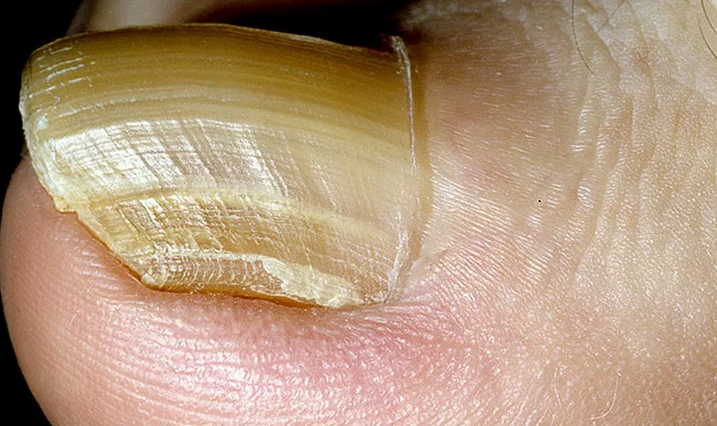
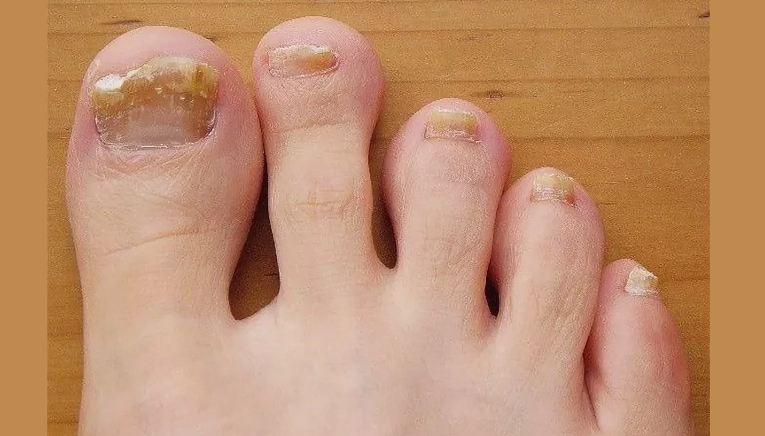
If you have yellowness and the first signs of thickening of the nail plate, contact the doctor for advice. Read more below.
Why are the nails on the fingers of the legs become thick, hard, turn yellow and crumble in an adult, a child: reasons
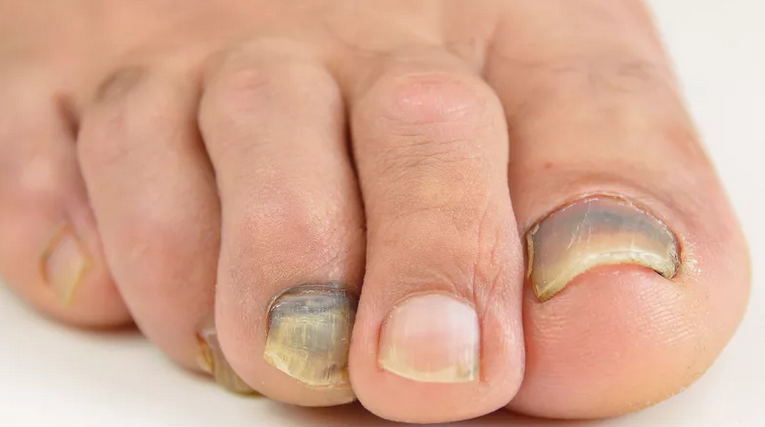
It is always unpleasant when the nails acquire an unaesthetic appearance. People have complexes. I would like to get rid of the problem as soon as possible. Why do nails on the fingers become thick, hard, turn yellow and crumble in an adult, a child? Below are the causes of this ailment.
- Most often, a change in the thickness, shape and overall structure of the nail platinum is a consequence of the defeat of their main components.
- These include keratin and intercourse substance.
What can contribute to this? Here is the answer - reasons:
- Various kinds of infections, fungi and many types of parasitic bacteria.
- The main pathogenic strains of microorganisms.
- Dermatophyte fungi-three types of trichophyte, epidermophyte and microspore.
As a result, an disappointing verdict - onychomycosis is a fungal lesion.
It is worth knowing: Pools, baths, showers for common use, toe of someone else's shoes are not a complete list of places where you can get infected.
There are also factors that can increase the risk of picking up such an infection:
- Flat feet
- The presence of psoriasis
- Eczema
- Age characteristics
- Chronic diseases - diabetes, anemia
- Increased sweating of the legs
- Lack of vitamins
- Vascular and nervous diseases - neuroangiopathy, angiopathies
- Unsuccessfully selected shoes that are too small, cramped and poorly ventilated
- Injuries and mechanical damage due to shoes, due to a strike on a solid subject
- Unsuccessfully executed pedicure
- The appearance of cracks, growths, etc.
The causative agent of this infection, in connection with its vital activity, contributes to modification of nails. Highlighting specific enzymes, keratin begins to gradually dissolve. This is due to the fact that the enzyme destroys the connection between protein molecules. The nail delays, thickens and deforms. No living cage can exist without water, so the fabric of the nail experiences “thirst” and, as a result, the plate crumbles, loses elasticity, fades and cloudy. Having determined the source of the problem, it is worth immediately starting it.
How to determine the reason why the nail on the leg has become thicker - on the thumb, little finger: diagnosis
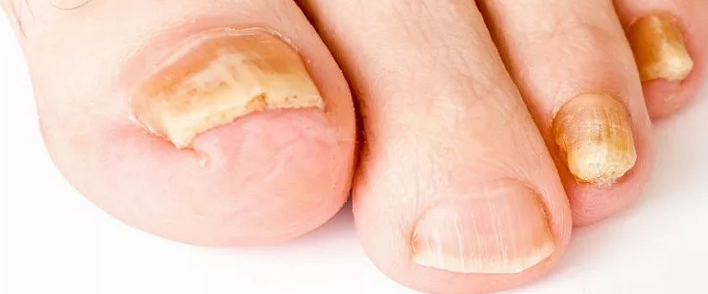
We figured out the source of introduction of infection above. What are the initial signs of thickening of the nail, which the doctor often pays attention to the reception, and what diagnostics is carried out in this case. The doctor knows how to determine the reason why the nail on the leg became thicker - on the thumb, little finger, and other fingers. He asks the patient what kind of shoes he wears, whether there were injuries before that, other nail defeat. Evaluates the presence of the first signs of fungal damage, which are easy to notice:
- Most often, the area of \u200b\u200bthe free edge of the nail is affected. Spots with yellowness, stripes, cracks appear.
- Next, the nail plate changes the color, namely, it becomes a muddy yellow color, loses transparency and becomes fragile and loose.
- The sub -gear space (bed) also undergoes changes. This is due to the accumulation of the keratinized masses under the nail, the so -called shaped hyperkeratosis occurs.
We highlight the main features of the fungal damage to the nail:
- The plate is peeling, cracks appear
- Itching appears in interdigital spaces
- The color and structure of the nail plate changes
- Nail rollers turn red and inflamed
There is also a different type of onychomycosis - atrophic. At the same time, the plate itself is destroyed, the horn masses fill the bed. As a result - thinning and rejection of the plate (onycholysis). Most most of all the thumb and little finger are affected, since they are more susceptible to mechanical exposure and are closer to the outer edge.
The diagnosis of fungal infection is also carried out by resorting to microscopic examination. For these purposes, they take part of the affected nail plate for analysis. A culture of microorganism is distinguished and studied in detail under a microscope. In the event that a fungal infection has a predisposition to relapses, then a biochemical analysis is performed and the immunogram is made up. This is important to exclude the presence of vascular diseases of the lower extremities. For this, the patient is directed for ultrasound.
A thick, solid nail yellows and crumbles - how to get rid of than to treat: ointments, drugs, fungus tablets, varnishes
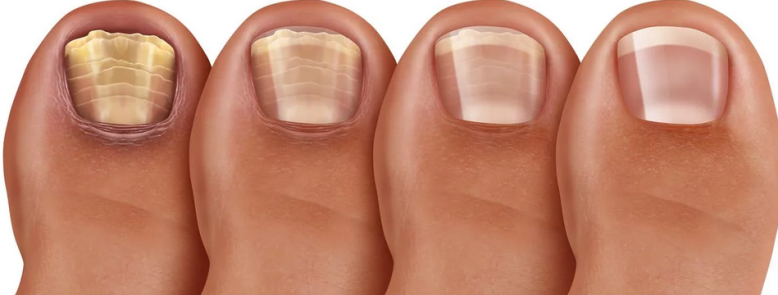
The person who faced this problem, and his nail on his leg became thick, hard, turns yellow and crumbles, should immediately contact a specialist. Such issues are dealt with by a proper-dermatologist. Self -medication in this case is a meaningless practice, because only an experienced specialist will be able to prescribe the correct treatment based on the cause of the infection and its pathogen. How to get rid of the disease, how to treat? It is worth noting:
- Treatment is represented by a whole range of measures.
- The main approach to solving the problem is medication.
- It is carried out using various ointments, special varnishes.
- Drug treatment kills the infection from the inside.
As drugs, the leading positions are occupied by the following representatives:
- Clotrimazole
- Terbinafin
- Mikonazole
- Cyclopirox
The ointments are used locally, they penetrate deep into the structure of the nail and also fight with microorganisms. Among the ointments can be distinguished:
- Exoderil
- Mycosan
- Lamizil
- Different sulfur -based gels
The use of varnishes is an additional method of treatment, but not the main one:
- It should be applied to the nails in two layers, covering not only damage to the sections.
- So you can prevent stratification and peeling of the nail and improve its general appearance, hide some defects.
- Loceril varnish is recommended for use. It is specially created for nails affected by fungus. Using its fungicidal properties, varnish kills pathogenic bacteria.
In the case of insufficient effectiveness of treatment, the fungus tablets are introduced into the course. Due to the presence in the composition of antimycotics, a stronger blow to microorganisms is inflicted. The course of treatment is extended for 1-2 months.
To eliminate the itching of the skin around the fingers, interdigital gaps, antihistamines are prescribed, which increase the permeability of capillaries and reduce tissue edema. The drug of choice is "Doxepine" and "chloropyramin". They also resort to radical treatment methods. Apply Dimexide or benzo-salicylic acid To soften the nail and perform scraping mechanically.
Important: Calcium preparations should also be taken so that the nail can regenerate faster.
Treatment of thick white, yellow nails on the leg: Folk methods
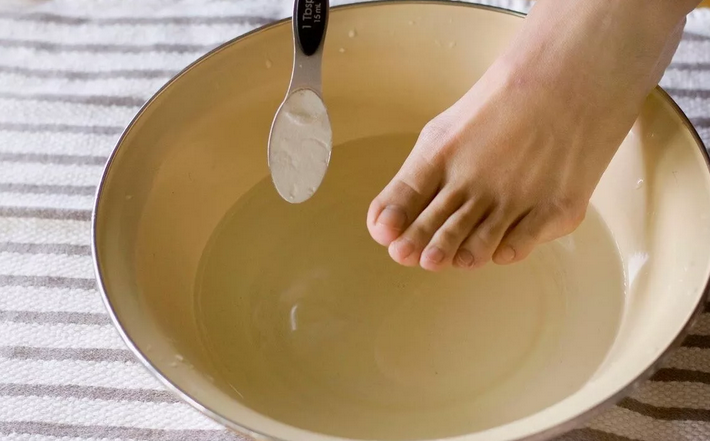
During the restoration of yellow, thick and deformed nails on the fingers of the legs, you should still trust the traditional methods of treatment. Traditional medicine has a place to be unconditionally, but it is worth practicing only well -established methods, and such methods are used as additional procedures - restoring. Among effective folk methods, the following are distinguished:
- Soda solution
- A decoction based on small, celandine and chamomile
- Propolis tincture
- Birch tar
- Lemon juice
- Aloe juice
- Burdock, thyme, golden mustache
Using these therapeutic mixtures, you can make warm baths, compresses and applications to the affected areas. They will relieve inflammation, itching and prevent an unpleasant odor. Often the treatment of thick white, yellow nails on the leg is carried out precisely with a solution of soda. This is one of the most popular methods:
- Stir soda in a basin with warm water at the rate of half a tablespoon on 1 liter of liquid.
- Lower the feet into this solution and hold at least 15 minutes.
- Then wipe your legs with a dry towel and rub in the nails an ointment or other drugs prescribed by the doctor.
Here is a recipe for a bath based on lemon juice:
- Mix two tablespoons of pure lemon juice with 5 liters of waterMix thoroughly.
- The water temperature should be within 37-38 degrees.
- The duration of the procedure from 15 to 20 minutes.
- After wipe your legs with a towel and apply a soothing cream.
- Contraindications: the presence of skin damage around the fingers and on the feet.
As for the compresses, the procedure is quite long - 7-8 hours. For the manufacture of the compress, the sheet of scarlet should be chopped, for example, bringing it into a gruel -shaped state. Apply to the nail and fix it with a food film and sock.
A thick, hard nail on the leg grows and hurts: causes, treatment
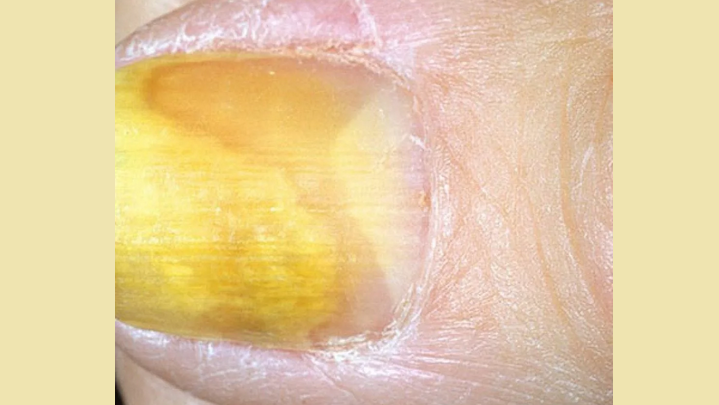
The nail, which thickens under the influence of the fungus, becomes tough and loses its physiological look, and also brings pain. Among the reasons that were presented above, the main thing is the presence of an infection and the occurrence of a specific disease - onychomycosis. In the event that an injury occurred, mechanical damage, then a hematoma and inflammation can form in the nail. Damage plays only the role of a predisposing factor for the further development of infection.
Important: If a thick, hard nail on the leg grows and hurts, then you need to consult a doctor so that he conducts diagnosis and treatment.
Mycoses themselves can occur quite often, periodically, so the procedure for softening the nail plate should be carried out. This is done using special solutions and by no means simultaneously.
- During 2-3 days The nail gradually loses its hardness and becomes almost a soft cornea.
- Further, in the hospital, its scraping is performed.
- In order for a new and healthy nail in its place, a complex of medical measures is carried out: drug treatment, baths and taking calcium preparations.
- Antiseptic and analgesic drugs are prescribed as drugs that are used to relieve pain syndrome, and antihistamines are against itching skin.
- It is also necessary to get rid of old socks, to disinfect all the shoes and floors in the house. This will help to avoid a new infection.
Preventive measures are the main task of a person after removing the nail plate and getting rid of the fungus. Read about this below.
How to cut, cut thick, hard white and yellow nails on your feet: soften, how to soften, how to remove?
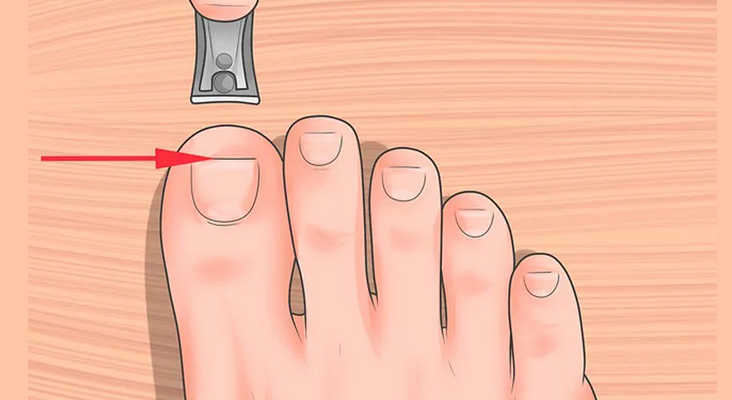
The thickened, firm and replacing its pigmentation nail is quite difficult to cut. To do this, soften it, and then remove it. How to cut, cut thick, hard white and yellow nails on your legs?
It is not such a simple task to cut even a softened plate, because it is very important not to damage the surrounding fabrics. For cutting nails, it is better to use nippers. They do not have pronounced sharp edges and you can accurately adjust the length of the cut.
Another alternative version of the tool is scissors for cutting chicken. They will also help to cope with this task painlessly. It is worth cutting off the entire free edge, but not under the root itself. Slightly walk along the edge of a manicure file and fix the result by applying an oil liquid consisting of a complex of vitamins - A, D, E.
Prevention of thick nails on the legs
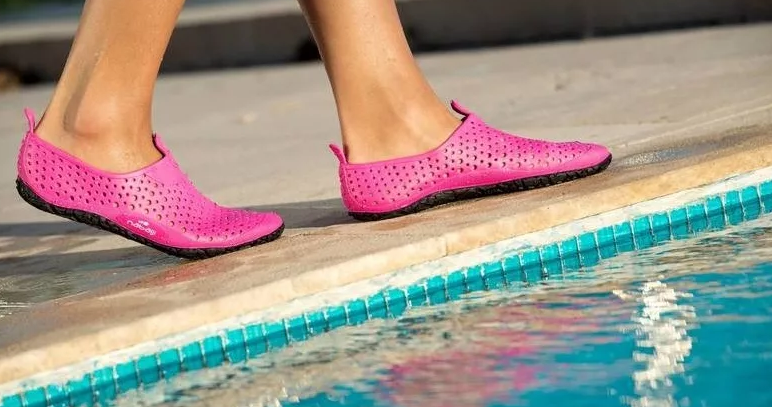
As mentioned earlier, the prevention of thick nails on the legs is the golden rule of each person who had a fungus. If someone has such a pathology in your family or it has been ill with this ailment earlier, then it is also important to conduct preventive methods.
Especially if you have already passed the course of treatment and the infection is left behind, you must adhere to some rules so that they do not encounter the problem again. The main recommendations are that there is an urgent need to avoid the factors that can lead to the occurrence of infection. Let's look at the main of them:
- Personal hygiene. It is necessary to wash your legs more often in warm water with a disinfectant detergent, especially in the summer. Always use only your towel, socks and shoes. In a public place, according to the pool and bath, do not walk barefoot, but purchase rubber shales.
- Moisturization and vitamins. Nails on the legs also require nutrients and vitamins. After washing, the nourishing cream should be applied to the foot from the fingers to the heel, and the nails of a vitamin oil solution on the nails themselves.
- Herbs. Once a week you can make a bath for legs from a decoction of herbs. Their great variety is celandine, burdock, etc.
- Symptoms. At the first symptoms of the presence of the fungus, consult a doctor immediately.
Remember: It is always easier to warn the disease than to fight her!
Take care of the health of your nails. In public places go in shoes. At the first signs of the disease, contact the doctor. If someone has a fungus in the family, then conduct preventive methods. Follow the health of the veins on your legs, since the health of the nails also depends on it. Good luck!







